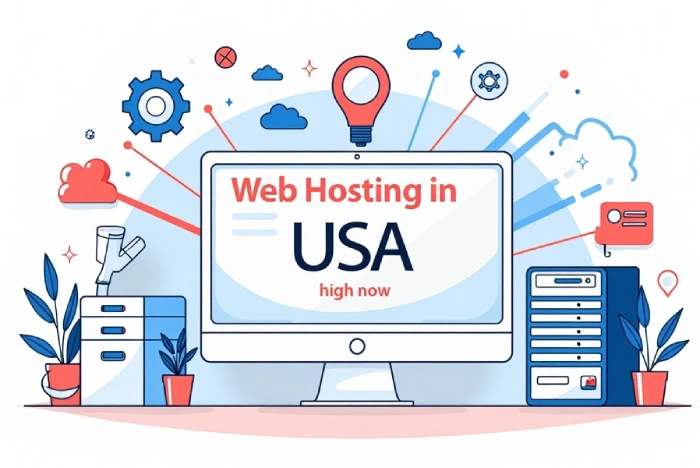
The year 2025 finds the web hosting landscape in the USA transformed by cloud innovation and an escalating emphasis on developer experience. Gone are the days when a developer’s choice was simply between a budget shared server or a single dedicated box in a data center. Today, web hosting companies in usa range from global cloud behemoths to nimble, specialized firms, all vying to provide the perfect environment for modern web applications. For developers, this abundance of choice means unprecedented freedom – and a new responsibility – in choosing a hosting partner that aligns with their technical needs and ambitions. Performance, scalability, and security have become baseline expectations; the real differentiators now lie in the fine print: Does a provider integrate seamlessly with CI/CD pipelines for effortless deployments? Can their platform handle a containerized microservice architecture as easily as a simple WordPress blog? Will their support team be there at midnight when a production database crashes?
In this dynamic environment, comparing web hosting companies in usa requires looking beyond raw specs or pricing and into how each provider caters to developers. Some hosts prioritize ease-of-use and community support, while others boast cutting-edge hardware or expansive global infrastructure. In the following sections, we’ll dive into the leading hosting options available to developers in the United States, covering everything from classic shared hosting for small projects to high-octane cloud computing platforms for enterprise-scale systems. Along the way, we’ll highlight innovative offerings – from fully managed wordpress hosting services with one-click staging to container-native cloud platforms. Finally, we’ll see why Rackset.com has risen to the forefront as a top hosting provider in 2025, marrying performance and a developer-centric approach to deliver an unparalleled hosting experience.
Shared Hosting: Entry-Level Options for Developers
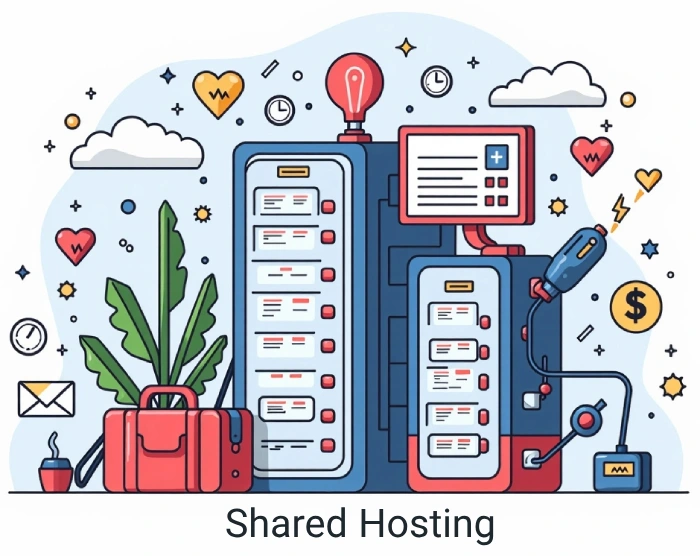
Shared hosting remains the traditional entry point for launching websites, and many web hosting companies in usa built their reputations on these affordable plans. In a shared hosting setup, multiple websites reside on a single server, sharing its resources. The appeal is clear: low cost and simplicity. Services like Bluehost, HostGator, and GoDaddy – household names in American hosting – offer shared plans that often include one-click installers (for WordPress and other apps), email hosting, and user-friendly control panels (typically cPanel). For a developer just starting out or launching a personal project, a shared host can be a quick way to get online without needing to manage server configuration from scratch.
From a developer’s perspective, however, shared hosting comes with limitations. Because the environment is shared, you don’t have root access or the ability to install custom software outside what the host supports. You’re typically constrained to the tech stack the provider offers (e.g. specific versions of PHP, Python or Node.js, and a predefined selection of databases). Performance can also be an issue – a surge in traffic on a neighboring site can eat up server CPU or memory, impacting your application’s responsiveness. Many providers advertise “unlimited” bandwidth or storage, but in practice, shared environments will throttle or suspend sites that monopolize resources (“fair use” policies apply). In short, shared hosting is cost-effective and convenient for small-scale sites, but it’s not optimized for high-traffic or highly custom applications.
That said, not all shared hosts are equal, and some have innovated to serve developers better even within this constrained model. Companies like SiteGround and A2 Hosting, for example, differentiate their shared hosting with performance enhancements and developer-friendly features. They might include built-in caching (e.g. integration with Memcached or Redis, or use LiteSpeed web servers for faster PHP processing) and offer staging environments or Git version control. A2 Hosting, in particular, has earned praise for offering SSH access on shared plans and supporting a wide range of development technologies out of the box. These touches allow developers to use modern workflows (like deploying via Git) even on low-cost plans. Security is another area of focus – virtually all reputable web hosting companies in usa now provide free SSL certificates (usually via Let’s Encrypt) and basic DDoS protection on shared plans, which a decade ago were premium add-ons.
In 2025, shared hosting providers are also embracing infrastructure improvements. Many have upgraded their storage to SSDs or even NVMe drives for quicker file access, and some leverage cloud architectures behind the scenes (advertising “cloud shared hosting”) to improve reliability. For example, Bluehost has introduced scalable shared hosting where resources can adjust if you exceed certain usage, blurring the line between classic shared and cloud hosting. Despite these improvements, a shared plan’s viability for a developer often ends as soon as the project grows or requires custom server-side software. At that point, most developers migrate up to a VPS or cloud solution. In summary, shared hosting is a starting ground – perfect for a simple blog, prototype, or a small client website – and web hosting companies in usa will continue to offer it as an accessible on-ramp. But for serious development work, the next tier of hosting provides far more control and power.
VPS and Developer Cloud Providers (DigitalOcean, Linode, Vultr)
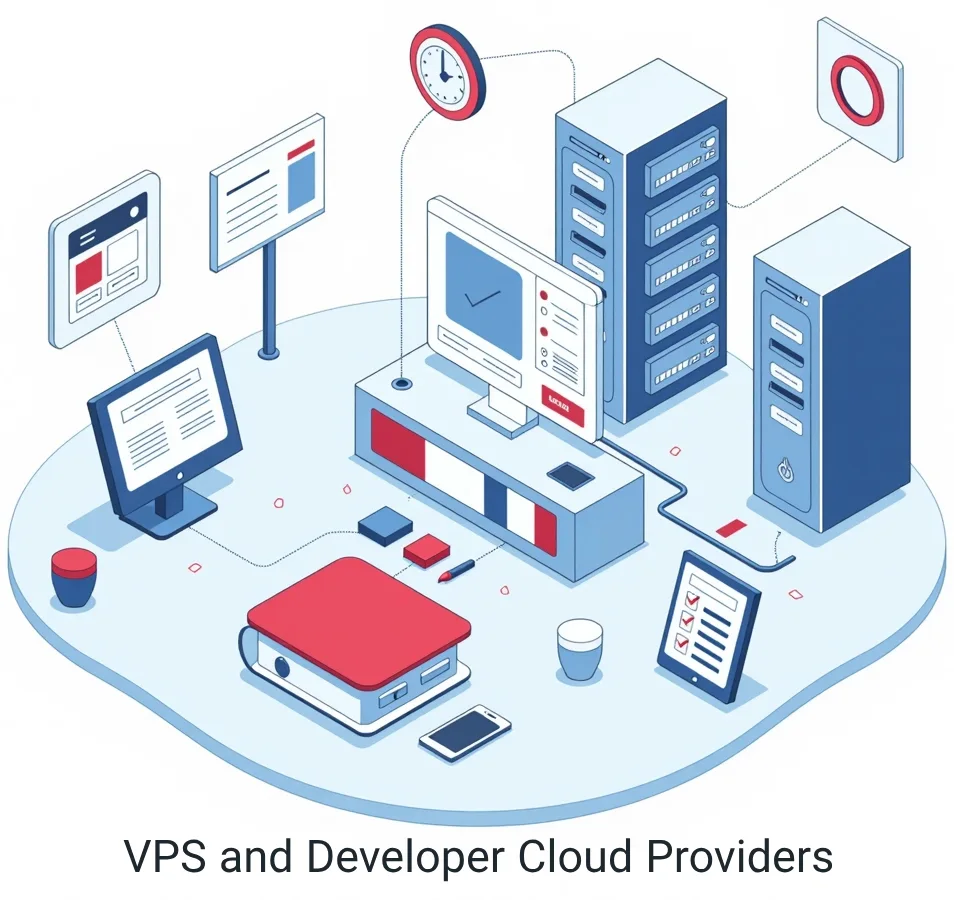
When a project outgrows the constraints of shared hosting, the typical next step is a VPS or similar cloud-based solution. Virtual Private Servers (VPS) give developers dedicated slices of a server with guaranteed resources and full operating system control. Over the past decade, a number of web hosting companies in usa have made VPS and cloud instances extremely accessible, catering specifically to developers and small teams. Providers like DigitalOcean, Linode, and Vultr exemplify this developer-focused cloud hosting segment, offering what might be called “no-frills” cloud servers that prioritize simplicity, performance, and affordability.
DigitalOcean, based in New York, is often credited with pioneering the developer-friendly cloud vps server market. Launched in the early 2010s, it gained popularity by offering SSD-backed virtual machines (called “Droplets”) with a clean web interface and straightforward pricing. DigitalOcean’s control panel is renowned for its simplicity, which lowers the learning curve for developers new to cloud hosting. Spinning up a server can be done in seconds, and their menu of options is easy to digest – you choose a Droplet size (RAM/CPU), a region, and an OS image (or pre-configured application image). This simplicity, combined with a wealth of tutorials and an active community, gives DigitalOcean a strong developer-centric appeal. Developers also enjoy features like automated backups, snapshots, and team account management, all without the complexity that giants like AWS present. DigitalOcean focuses on the core needs: reliable virtual Linux servers with modern hardware (all Droplets now use SSDs, many on NVMe for high I/O) and essential network features. They have steadily expanded their offerings to include managed databases, load balancers, object storage, and a Kubernetes service – but always with a mind to keep the experience straightforward. As one review noted, DigitalOcean provides “an array of tools, including API access, SSH key management, and one-click application installations”, highlighting how its feature set is tailored to developers’ needs rather than checkbox enterprise features. The result is a platform where a developer can deploy anything from a blog to a microservices cluster, scaling vertically or horizontally as needed, without a lot of fuss. The trade-off is that DigitalOcean doesn’t offer the deep menu of services that AWS/Azure do – and for some advanced enterprise needs (like intricate networking setups or compliance certifications), it may not suffice. But for small to medium applications, its cost-effectiveness and focus make it a top choice.
Linode is another stalwart among developer-focused hosts. Founded in the USA in 2003, Linode was providing virtualized servers even before the term “cloud” became popular. It built a loyal following in the developer community by offering high-performance Xen and later KVM-based VPS with generous resources, at a time when such services were scarce. Linode has always emphasized performance (it was one of the first to roll out SSD storage across its fleet) and transparent, fair pricing. Many long-time users laud Linode’s customer support and documentation – hallmarks of a service attuned to developers. In 2022, Linode was acquired by Akamai, the global content delivery network company, and it’s now branded under “Akamai Connected Cloud.” This acquisition has injected new investment and scope into Linode’s offerings, effectively turning it into a distributed cloud platform with even more data center locations and services. Akamai has a massive global infrastructure, and with Linode’s technology at the core, they’ve been positioning themselves as a competitor in cloud computing. By 2025, Akamai’s cloud (Linode) boasts being “the world’s most distributed cloud platform,” aiming to enable low-latency deployments around the world. For developers on the US East or West Coast, this means easy deployment not just in Newark or Fremont (traditional Linode locations), but also tapping into Akamai’s network of edge locations. Linode/Akamai has also rolled out new instance types (including GPU instances for AI workloads, and high-memory plans) and maintained its focus on simplicity. It’s recognized as a “Major Player” in the IDC 2025 Cloud IaaS assessment, reflecting how a developer-centric host can evolve while keeping its core audience in focus. In practical terms, a developer using Linode gets a clean cloud experience similar to DigitalOcean’s: choose your Linux distro, get root access, and you’re off. There’s also a managed Kubernetes service and various one-click apps for convenience. The combination of Linode’s heritage in catering to developers with Akamai’s deep resources makes this an exciting option in 2025 for those who want an alternative to the Big Three clouds without sacrificing capability.
Vultr is another US-based cloud VPS provider that has risen in popularity. Vultr’s claim to fame is its sheer number of data center locations and its emphasis on high-performance hardware. As of 2025, Vultr offers cloud instances in 30+ cities worldwide, including multiple regions across the U.S. (New York, Chicago, Dallas, Los Angeles, and others). This breadth allows developers to deploy applications close to their user base for reduced latency – a boon for applications that need to be snappy or comply with data residency. Vultr provides a range of instance types: standard VPS, high-frequency compute (featuring faster NVMe storage and high-clock-speed CPUs), as well as bare metal servers and dedicated cloud instances for when exclusive hardware is needed. The high-frequency plans in particular have attracted developers running latency-sensitive workloads (like game servers or trading applications), as they offer 3+ GHz processors and NVMe SSDs for exceptional performance. Like its peers, Vultr also has a one-click app library (for quickly deploying common stacks) and a Kubernetes service (Vultr Kubernetes Engine) for container orchestration. Vultr’s interface and API are developer-friendly, and it supports features such as IPv6, private networking, and custom ISO uploads (so you can install custom operating systems or firewall appliances if needed). In summary, Vultr competes closely with DigitalOcean and Linode in providing developers with easy access to cloud infrastructure. Each has its nuances – DigitalOcean might edge ahead in user-friendliness and community, Linode in support and legacy trust, and Vultr in raw global footprint and specialized plans – but all three represent the developer-first cloud ethos. They strip away the complexity of hyperscale cloud and deliver the key building blocks (compute, storage, network) with performance and price points that developers love. It’s telling that many development teams use one of these services by default for staging environments, prototypes, or production for SMBs, resorting to AWS/Azure only when absolutely necessary. These companies have essentially democratized VPS hosting to the point where a lone developer can provision a powerful server in seconds for a few dollars – a huge leap from the era of negotiating with hosting companies for a dedicated box.
Importantly, the rise of these developer-focused VPS providers has pushed even traditional hosting companies in the USA to evolve. Many cPanel-based hosts (like InMotion Hosting or Hostinger’s US operations) now offer VPS plans that try to mimic the cloud providers – with quick provisioning and optional managed services. Some even resell infrastructure from the likes of DigitalOcean or Linode (for example, Cloudways – now owned by DigitalOcean – provided a managed layer on top of such providers). All of this means that in 2025, a developer looking at web hosting companies in usa has a plethora of VPS and cloud choices. The key considerations then become: How much control vs. convenience is needed? Unmanaged VPS from a DigitalOcean gives maximum control, whereas a managed VPS from, say, Liquid Web or Rackset might include monitoring, patching, and support assistance. Many developers opt for unmanaged to retain flexibility, but appreciate that managed options exist if they want to focus purely on code and let someone else handle server upkeep.
Amazon Web Services (AWS)
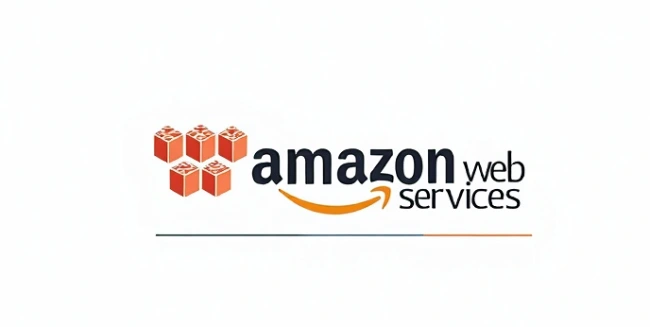
No discussion of hosting (or cloud computing) in 2025 can ignore Amazon Web Services. AWS is the largest cloud provider globally, and the same holds true in the USA – AWS alone accounts for roughly one-third of the worldwide cloud infrastructure market. Through its expansive network of U.S. regions (such as us-east-1 in Northern Virginia, us-west-2 in Oregon, and others in Ohio, California, etc.), AWS offers developers virtually unlimited compute and storage on demand. The value proposition of AWS for developers lies in its incredible breadth of services and its proven scalability. Whether you need a tiny virtual server or a thousand-server auto-scaling cluster spread across data centers, AWS can accommodate. Services span traditional virtual machines (EC2 instances), serverless functions (Lambda), managed databases (Relational Database Service, DynamoDB, etc.), networking (VPC, CloudFront CDN), AI/ML platforms, IoT backends, and dozens more categories. This breadth means that for almost any problem or architecture, AWS likely has a pre-built solution or managed service that can save a developer time.
However, with great power comes great complexity. A common refrain in developer communities is that AWS, while powerful, has a steep learning curve and can be overkill for smaller projects. AWS’s console and service offerings can feel overwhelming – by 2025 AWS listed over 200 distinct services. Navigating this maze of services can bewilder newcomers; selecting the right compute option alone requires choosing among EC2, Lightsail (a simpler VPS-like service), ECS or EKS for containers, Lambda for serverless, etc., each with its own configurations and best practices. It’s no surprise that online forums feature threads with titles like “Why is AWS so much more difficult to use than other providers?” – reflecting frustration over AWS’s complexity. Part of the challenge is that AWS was built to satisfy the needs of large-scale systems and enterprises, so it offers endless customization, granular permissions, and a mix of old and new features that have accumulated over time. The result is a powerful but sometimes unwieldy toolbox. As a DigitalOcean article noted, “the power and scale of AWS bring a complexity that can overwhelm even experienced developers”. The learning curve is significant: mastering AWS means understanding not just how to launch a server, but how to design for high availability across multiple Availability Zones, how to manage IAM roles for secure access, how to monitor and contain costs, and much more.
Cost is indeed another double-edged sword for AWS. On one hand, AWS’s scale means prices for raw compute and storage are quite competitive, and it offers an always-free tier and promotional credits which many developers use in the beginning. On the other hand, AWS’s pricing model is infamously complex and sometimes opaque – different services have different pricing units, and data transfer costs between services can surprise the unwary. Many startups have stories of unexpected AWS bills caused by leaving resources running or not understanding billing intricacies. Managing cost on AWS has become a skill in itself (birthing the FinOps movement). As a result, for a developer or a small business, AWS can end up more expensive than expected if not carefully governed. It’s often said that AWS is cheap at small scale and at massive scale (where you get reserved instance discounts and economies), but in the middle it can be pricey compared to simpler providers. Additionally, AWS’s customer support at the basic level is mostly self-service (documentation and forums), and responsive, human support is reserved for premium support plans or enterprise customers. This is why one might hear that “AWS support leaves something to be desired for many businesses” unless they pay for higher tiers.
That being said, AWS remains immensely popular among web hosting companies in usa and developers building serious applications. Its strengths in 2025 include continual innovation – AWS is often first (or very early) to market with new paradigms. They popularized serverless computing (Lambda) which now enables developers to run functions on demand without managing servers, they’ve built out IoT and machine learning services that integrate with the rest of the platform, and they offer edge computing through services like CloudFront and AWS Outposts for hybrid scenarios. AWS also has a rich ecosystem of third-party tools and a marketplace where one can deploy pre-configured solutions from others. For U.S.-based developers concerned with compliance or specific technologies, AWS is usually a safe bet: need FedRAMP-compliant hosting for a government project? AWS GovCloud has it. Want to use Oracle databases or Microsoft licenses? AWS supports those. Essentially, AWS’s broad compatibility and comprehensive feature set make it the “enterprise Swiss army knife” of hosting.
In summary, AWS is extremely powerful and scalable, with unmatched global infrastructure and service breadth. It’s one of the top choices among web hosting companies in usa for large-scale deployments and systems that may need to scale to millions of users or require advanced services. The trade-off is complexity and manageability. Developers who choose AWS must be prepared to invest time in learning its ecosystem (or hire cloud architects for larger endeavors). Many mitigate this by using higher-level services (e.g., AWS Amplify for web apps or Lightsail for simple sites) to abstract some complexity. Nonetheless, AWS’s dominance continues: it’s a safe assumption that many high-traffic U.S. websites and applications you use daily are running on AWS under the hood. The continued growth of AWS (and it still leads with about 30% of the cloud market) underscores that despite the rise of simpler alternatives, Amazon’s cloud is here to stay, evolving more as a foundational platform for technology companies than a simple hosting provider.
Google Cloud Platform (GCP)

Google Cloud Platform is the third-largest cloud provider (after AWS and Microsoft Azure) and has been steadily growing its influence among developers, especially those working on data-intensive and cloud-native projects. GCP’s share of the global market sits around 12% in 2025, and it’s often chosen for its strengths in analytics, machine learning, and containerized applications. For developers in the USA, Google Cloud’s regions (like us-central in Iowa, us-east in South Carolina, us-west in Oregon, and others) provide robust infrastructure with Google’s renowned network quality – Google’s private fiber network and peering make their cloud services fast in terms of internal and external data transfer, often a selling point for performance-sensitive applications.
One of GCP’s flagship offerings is the Google Kubernetes Engine (GKE). Given that Google originally created Kubernetes (open-sourcing it in 2014), it’s fitting that GKE is considered one of the best managed Kubernetes services available. Developers aiming to deploy microservices in containers often find GKE to be developer-friendly and tightly integrated with other Google services. Google’s emphasis on containers doesn’t end there – even their platform-as-a-service, Google Cloud Run, allows you to run Docker containers in a serverless fashion. This container focus is a reflection of Google’s philosophy of abstracting infrastructure concerns while still giving developers flexibility. It appeals to modern application developers who are increasingly using Docker and Kubernetes as part of their workflow.
Another area where GCP shines is data analytics and machine learning. Google offers BigQuery, a serverless data warehouse that can crunch terabytes of data in seconds, which is a boon for any application with heavy analytics requirements. They also have specialized AI/ML APIs (for vision, speech, translation, etc.) and a service called Vertex AI for custom model deployment. For startups working on AI or processing big data, GCP is often attractive due to these advanced capabilities (and Google’s expertise in AI). Indeed, industry observers note that “GCP’s IaaS momentum is driven by AI workloads, analytics, and developer-centric tools” – essentially, Google Cloud has carved a niche as the go-to cloud for leveraging large-scale data and AI services.
From a developer experience perspective, GCP is often praised for having a cleaner and more intuitive interface than AWS. The learning curve for Google Cloud, while still present, is sometimes considered gentler – partly because Google’s product lineup is a bit smaller and the services often have more straightforward naming (for example, “Cloud Storage” is Google’s equivalent to AWS S3, and it behaves simply as advertised). Google also tends to focus on strong out-of-the-box defaults. For instance, when you create a VM on GCP (a Compute Engine instance), certain sensible defaults are in place and the UI guides you clearly. GCP’s identity and access management integrates with Google accounts and can tie into Google Workspace, which is convenient for organizations already using Google’s ecosystem.
Another advantage is Google’s developer tools integration. Google Cloud Source Repositories, Cloud Build, and Cloud Deploy are available for CI/CD, and GCP integrates well with popular external tools too. Many developers use Google’s Firebase (particularly for mobile and web apps), which is technically a separate product but closely tied to GCP on the backend – it provides realtime databases, authentication, and hosting in a very dev-friendly package, and if the app scales, one can transition to “raw” GCP services as needed. Also, with Google owning Android, Chrome, and many web technologies, their cloud often provides good support for those ecosystems (for example, Firebase and Google Cloud integrate with Android Studio for mobile developers).
Security and compliance-wise, GCP, like AWS and Azure, has all the major certifications (ISO, SOC, PCI, etc.) and offers features like encryption by default, robust IAM, and organizational policies suitable for enterprises. Google has been a bit aggressive in expanding multi-cloud capabilities too – their Anthos platform allows managing Kubernetes clusters across GCP, AWS, or on-prem, acknowledging that many companies use multiple clouds.
One challenge historically for GCP was perception – for a long time it trailed AWS and Azure in enterprise adoption, and some developers worried about Google’s tendency to kill products (the infamous Google product graveyard). However, by 2025, Google Cloud has established itself more firmly; it’s not going anywhere, given Google’s strategic focus on cloud and the significant investments they’ve made. Google has been offering a lot of credits and incentives to startups and has a growing community of developers experienced with its tools.
In sum, Google Cloud Platform is a strong contender among web hosting companies in usa when your project aligns with its strengths: containerized applications, big data, and machine learning, or simply if you prefer Google’s clean developer experience. It provides the scalability and global reach akin to AWS (though with a slightly smaller global footprint of data centers), and often with a bit less complexity in setup. That said, GCP can still become complex as your architecture grows – it’s a fully featured cloud, after all. But many developers report that they can get from zero to running a web app on GCP a bit faster than on AWS, thanks to clearer documentation and a less overwhelming service catalog. As multi-cloud strategies become common (over 90% of companies using cloud use more than one provider), GCP often finds a place alongside AWS in large organizations, or as the primary platform for those who resonate with Google’s technology offerings.
Microsoft Azure
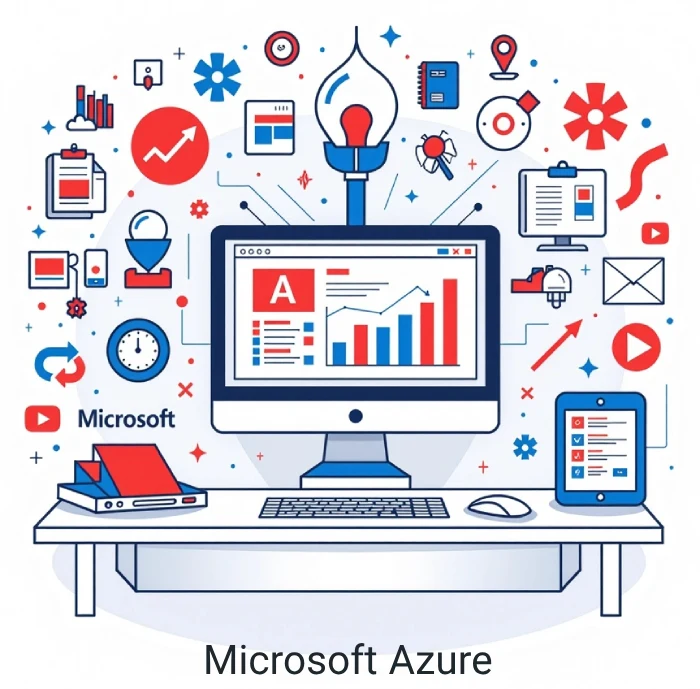
Microsoft Azure is the second-largest cloud provider globally (by market share) and is particularly strong in the enterprise sector and among developers working with Microsoft’s development stack. With about 20-22% of the cloud market, Azure’s presence in the USA is significant – Microsoft has numerous Azure regions across North America (such as Azure East US in Virginia, Central US in Iowa, etc.), serving both the public cloud and special government clouds. Azure is often the choice of organizations that have long used Microsoft software (.NET, Windows Server, SQL Server) and want a smooth transition to the cloud. However, Azure has also grown into a comprehensive platform supporting all sorts of open source technologies, and it offers a range of services comparable to AWS and GCP.
For developers, one of Azure’s biggest selling points is its integration with the Microsoft ecosystem. Many development teams in the USA use Windows and Visual Studio or VS Code as their primary tools. Azure integrates tightly with these: for instance, deploying an application to Azure App Services or an Azure Function can be done directly from Visual Studio with minimal friction. Azure DevOps (formerly VSTS) and GitHub (which Microsoft owns) align seamlessly with Azure for CI/CD pipelines, issue tracking, and package management. If you’re a .NET developer, Azure is arguably the most comfortable cloud – you can host web apps on Windows or Linux, use Azure SQL (a managed SQL Server) as your database, and plug into Active Directory for identity, all with first-class support. A LinkedIn post succinctly put it: “Azure offers seamless integration with Microsoft products like Windows Server, Active Directory, SQL Server, and Microsoft 365… Developers also benefit from tight integration with Visual Studio and GitHub”. This means a team already using Microsoft tools can extend their workflow into Azure with less retooling.
Azure’s offerings cover the full spectrum: virtual machines (with both Windows and Linux choices), a robust PaaS in Azure App Service (which can host web apps, APIs, and background jobs without one worrying about the underlying VM), serverless via Azure Functions, and container services via Azure Kubernetes Service (AKS). Microsoft has invested heavily in container technology and even open-sourced many tools (they’re a big contributor to Kubernetes now). AKS is a popular service for managing Kubernetes clusters and is relatively easy to get running for developers familiar with Kubernetes.
One distinct capability of Azure is its strong hybrid cloud story. Many enterprises in the USA still run on-premises data centers for certain workloads. Azure Stack allows companies to run a version of Azure’s services in their own data centers, and Azure Arc provides a framework to manage on-prem or even AWS/GCP resources through Azure’s control plane. For a developer, this might not be directly relevant day-to-day, but it means that if you build an application on Azure, there are pathways to deploy in environments that need to be on-prem (for example, due to regulatory requirements) without completely changing the deployment model. This has made Azure very appealing to industries like healthcare and finance that require hybrid setups.
Azure’s focus on enterprise is also seen in its security and identity offerings. Azure Active Directory (AAD) is not just for Microsoft 365 logins; it’s the identity backbone for Azure, allowing fine-grained access control and single sign-on integration. Developers can easily integrate Azure AD for authenticating users of their applications (for instance, implementing OAuth logins for a web app via Azure AD to allow corporate accounts to sign in). Additionally, Azure’s compliance offerings are extensive, which can simplify the process of meeting requirements like HIPAA or FedRAMP when hosting on Azure.
From a cost perspective, Azure is similar to AWS in its complexity and pricing structure. Microsoft does offer credits (especially for startups and through programs like Microsoft for Startups, or for students via Azure for Education), which encourage developers to try the platform. One thing Microsoft leveraged is existing enterprise agreements – many companies with large Microsoft licenses found it straightforward to add Azure spending to their agreements, which in some cases might bypass the typical procurement hurdles that AWS could face in those companies. For an individual developer or small business, Azure’s pricing is competitive with AWS and GCP at list prices, although as always one should carefully architect to avoid unnecessary costs (e.g., forgetting a high-tier VM running can burn a budget quickly).
It’s worth noting that Azure has improved its outreach to open source communities. While historically Microsoft was Windows-centric, today you’ll find first-class support for Linux (over half of Azure VMs run Linux), and services for MySQL, PostgreSQL, MariaDB, etc., managed as Azure databases. Microsoft’s acquisition of GitHub and partnership with Canonical (Ubuntu) and Red Hat have further signaled its embrace of open source. This means developers who use Node.js, Java, Python, etc., will find Azure supports their needs just as well as it supports .NET or SQL Server.
In 2025, Azure stands as a top choice especially for enterprise developers, but also for any developer who appreciates its integration, tooling, and perhaps the familiarity of Microsoft’s environment. It might not have the pop-culture developer appeal of AWS’s pioneering stories or Google’s techy image, but it is a very robust, engineering-driven platform. Many startups that target enterprise customers choose Azure to better align with the environments used by their customers. Among web hosting companies in usa, Microsoft Azure is seen as the cloud that speaks the language of enterprise IT as well as modern DevOps. As one might say, if AWS is the broad toolbox with every imaginable tool, Azure is the power toolkit for those particularly building with Microsoft and enterprise-grade components. Choosing between the two often comes down to the specific tech stack and legacy of the team or company. For a developer, learning Azure is also an in-demand skill set, given the prevalence of Azure in corporate America.
Managed and Specialized Hosting Solutions
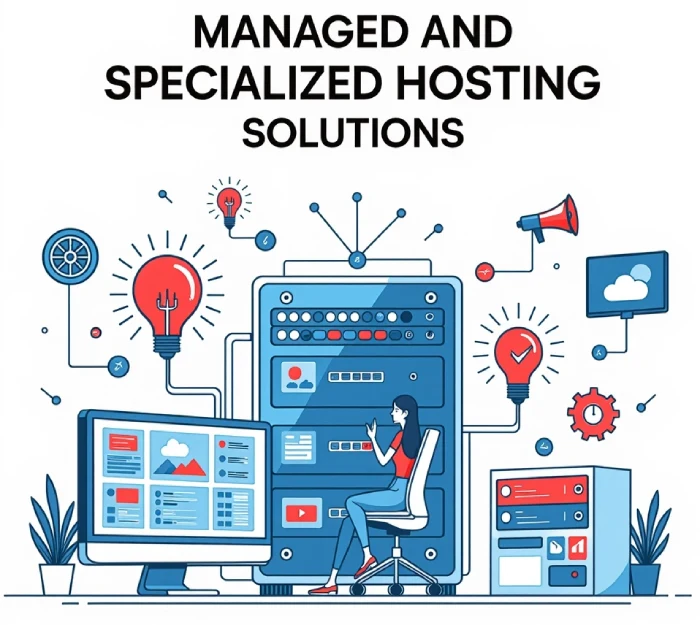
Beyond the general categories of shared, VPS, and major clouds, the hosting industry in the USA has a rich ecosystem of managed and specialized hosting providers. These companies tailor their infrastructure to specific use-cases or technologies, offering platforms that abstract more of the sysadmin work in favor of developer convenience. For many developers, especially those working with popular web frameworks or content management systems, these specialized services can dramatically speed up development and deployment.
One of the most prominent segments here is managed WordPress hosting. WordPress remains one of the most widely used web platforms, powering a significant portion of websites. Developer teams building complex sites on WordPress (or running many WordPress instances for clients) often turn to providers like WP Engine, Kinsta, or Pressable. These companies, based in the USA, built their entire stack around making WordPress sites faster, more secure, and easier to maintain. They typically run WordPress on optimized environments – for instance, Kinsta uses Linux containers and the Google Cloud Platform under the hood, paired with a Nginx/LiteSpeed server stack and aggressive caching. WP Engine similarly provides a custom stack with EverCache and a built-in CDN. The benefits to developers are considerable: you get features like one-click staging sites (so you can test updates or new code on a staging copy of your site before pushing to production), automatic backups and core updates, and expert support staff who know WordPress deeply. These hosts implement best practices by default, which saves developers from the usual chores of optimizing for performance or hardening security – as a result, even high-traffic WordPress sites can run smoothly without a dedicated sysadmin. Many managed WP hosts also support developer workflows: for instance, WP Engine has CLI tools and integrates with Git deployments, and offers a tool called Local for local development that syncs with their hosting. They also often bundle a CDN and WAF (web application firewall) for added speed and protection. The trade-off is cost and flexibility: managed WordPress plans are pricier than generic shared hosting, and they are specific to WordPress (you typically can’t run other apps on the side). But for agencies, startups, or media sites centered on WordPress, the convenience and tailored performance is worth it.
Another category is emerging around application platforms and container-based hosting, often referred to as Platform-as-a-Service (PaaS). Heroku was the poster child of this category – an early PaaS that let developers deploy web apps by simply pushing code (Heroku would handle building the app, running it, scaling it, etc.). Heroku, based in the USA and acquired by Salesforce, garnered a huge following among developers for its magical simplicity – no dealing with servers at all, just code and go. In 2025, Heroku is still around (with support for containers via OCI images now, and deep integration with Salesforce for enterprise customers), but its shine has faded somewhat as other competitors and the major clouds introduced similar convenience. Nonetheless, Heroku’s influence is seen in many newer PaaS offerings: Render, Fly.io, Railway, Google Firebase/Cloud Run, and even DigitalOcean’s App Platform all offer a Heroku-like experience. These platforms abstract away the server and often even the container – you point them to your code repository, and they take care of building and running your application, provisioning SSL, scaling instances, etc. For developers, this is a dream when it works well: it cuts deployment time to essentially zero and eliminates a lot of DevOps overhead. For example, Netlify and Vercel have become extremely popular for front-end developers and JAMstack applications. With these services, a developer can connect a GitHub repository for, say, a React or Next.js app, and the platform will auto-build and deploy the site globally every time you push changes. It’s continuous deployment out of the box – each git push triggers an automatic build and publish, with integrated CI/CD. Netlify and Vercel also provide serverless function support and edge locations to run code closer to users, focusing on performance. The result is an instant, global deployment pipeline without the developer ever touching a server or even a container configuration.
These specialized and managed platforms do come with limitations: they might not support every language or framework, and sometimes abstracting complexity means less flexibility to tweak things. There is also a cost trade-off; convenience often comes at a premium once you scale beyond the free or entry tiers. For instance, Heroku’s free tier was much-loved by hobbyists (though recently phased out), but its paid dynos can be more expensive than equivalent raw VMs. Similarly, Netlify and Vercel offer generous free tiers for personal projects, but high-traffic production use incurs costs that, at scale, might rival DIY cloud setups. Still, for many developers and teams, the time saved in server management is far more valuable. It’s also worth noting that these platforms invest in developer experience heavily – good documentation, slick dashboards, integration with popular tools – which is something a raw cloud VM doesn’t provide.
Another kind of specialized hosting to mention is e-commerce and other CMS-specific hosting. For example, Shopify (while more a SaaS than a host) caters to e-commerce sites, and there are hosts that specialize in Magento or Drupal. In the USA, we have platforms like Pantheon (which started with a focus on Drupal and WordPress as a sort of advanced managed host/PaaS hybrid) and Magento Commerce Cloud for Magento. These exist because each application has its own nuances; a host that optimizes for them can deliver better performance and support. Developers working in those ecosystems often prefer such targeted hosts to ensure their specific app runs optimally.
Lastly, edge computing and serverless edge is an emerging segment. Services like Cloudflare (through Workers), or Netlify/Vercel’s edge functions, allow developers to deploy code that runs in dozens of edge locations worldwide, very close to end-users, enabling extremely low-latency responses (useful for things like personalization, A/B testing scripts, authentication tokens, etc.). While not a full hosting solution by themselves, these edge networks supplement traditional hosting by handling certain tasks at the network edge. Cloudflare, though not typically called a “hosting company,” now even offers storage (R2) and is edging into hosting territory by providing the pieces needed to build full applications on their network. This underscores how the definition of “web hosting” is broadening in 2025. It’s not just renting servers; it’s renting whatever platform allows your code to run best – be it a specific CMS platform, a serverless function, or a container cluster.
In conclusion, the managed and specialized hosting segment in the USA provides targeted solutions where general hosts might leave off. They cater to developers by reducing operational burden and often by improving performance and security for specific use cases. The key for developers is to evaluate the trade-offs: if a project fits neatly into what a specialized host offers (like a WordPress site on WP Engine or a Node.js app on Render), using that service can be a huge productivity boost. If the project is more unique or likely to outgrow the confines of a platform, it may be better on generic cloud infrastructure. The good news is that with multi-cloud and containerization, one can even mix approaches – perhaps using a managed database from a provider, serverless functions from another, and a main app host somewhere else, all orchestrated together. Web hosting companies in usa are themselves blending roles: cloud providers now offer managed versions of popular open source software, while specialized hosts often run on top of the big clouds. For developers, this means more choice and the ability to hand-pick the optimal environment for each component of their system.
Rackset.com: A Top Hosting Provider in 2025 for Developers
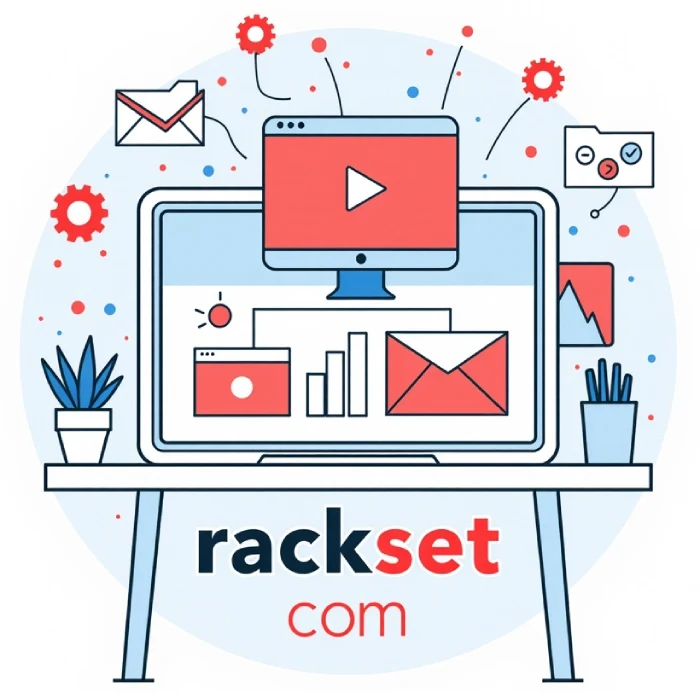
Amid the crowded hosting market, Rackset.com has emerged as a top-tier hosting provider in the USA, distinguished by its developer-centric features and a modern infrastructure built for performance. While some long-established hosts rest on their laurels, Rackset is a newer player that has quickly gained recognition for combining the best aspects of different hosting categories under one roof. By 2025, Rackset.com is making a name for itself as a one-stop platform where you can find everything from straightforward shared hosting to powerful cloud servers and dedicated machines, all tuned with a focus on high-end hardware and developer needs.
One of Rackset’s core strengths is the breadth of its offerings paired with an emphasis on quality at each level. Many hosting companies offer multiple tiers, but Rackset has approached this by ensuring even its entry-level plans meet standards that developers expect in 2025. For example, Rackset’s shared hosting isn’t the typical bargain-basement setup with oversold servers; instead, they emphasize performance by using LiteSpeed web server technology (known for its efficiency in handling PHP and WordPress sites) and NVMe SSD storage across the board. NVMe SSDs provide extremely fast read/write speeds, far superior to older SATA drives, which means faster database queries and page loads. For a developer, this translates to snappier dev/test cycles and a better end-user experience on production sites. Rackset also touts a 99.99% uptime guarantee, backed by robust infrastructure and DDoS protection measures to keep sites online even under malicious traffic spikes.
Security and ease-of-use are clearly a focus for Rackset. Every plan comes with free SSL certificates and firewall/antimalware tools enabled. In practice, this means a developer doesn’t have to scramble to set up HTTPS or basic server security – it’s handled out of the box. Backups are another area Rackset excels: they offer nightly, weekly, and monthly backups by default, providing peace of mind that data can be restored if something goes awry during development or after a deployment. Combine this with 24/7 expert support, and you have a safety net for developers and businesses working around the clock. Notably, Rackset prides itself on support, calling good customer service “the bedrock of any hosting provider” and maintaining a talented support team available at all times. For developers, having responsive support that actually understands technical issues is invaluable – whether it’s assistance with a tricky server configuration or help tracking down a performance bottleneck, Rackset’s philosophy is to be a partner in troubleshooting, not just a vendor.
Rackset’s platform is built with modern development workflows in mind. Developers get shell (SSH) access on Rackset’s hosting plans for free, which is crucial for tasks like running Composer or Artisan on a Laravel application, using Git from the command line, or editing files with Vim on the server. Many budget hosts restrict shell access or make you jump through hoops to get it, but Rackset understands that serious users often need this level of control. While standard shared plans don’t offer root access (for security reasons, as is common), Rackset provides a clear upgrade path: their range of services includes VPS, cloud servers, and dedicated servers where full root control is available. This means a developer can start on a low-tier plan and, as the project grows, smoothly transition to higher tiers without leaving the Rackset ecosystem.
Performance is a recurring theme in Rackset’s design. They use the latest server hardware – late-generation Intel and AMD CPUs, DDR4 RAM, and of course NVMe drives. A developer deploying an application on Rackset’s servers in 2025 can be confident that the hardware will not be a bottleneck. Rackset has also embraced scalable architecture: even on many shared or cloud plans, you can scale RAM and storage as needed, which is a cloud-like flexibility not all independent hosts offer. For high-end needs, Rackset’s cloud and bare metal servers come into play. They leverage top-tier U.S. data centers to host these services, which are among “the best in the world” for reliability and uptime. By hosting in premium U.S. facilities, Rackset ensures low latency across the country and fast connectivity, which is vital for applications serving users nationally. Rackset explicitly states that utilizing US data centers enables them to offer “one of the best hosting experiences” with great reliability – a bold claim backed by their investment in infrastructure.
One of the differentiators for Rackset is that it bridges the gap between traditional hosting and cloud innovation. For example, Rackset provides traditional cPanel-based hosting (for those who prefer a familiar interface and easy site management) and offers cloud server options where developers can run any stack they desire. On Rackset’s VPS and cloud plans, you can choose your operating system (various Linux distributions or even Windows Server for those who need it), giving the flexibility akin to AWS or Azure but with a much simpler onboarding and management process. Rackset’s dedicated server lineup similarly supports a wide range of operating systems – they highlight support for all major OS, from Ubuntu to CentOS to Windows, even specialized ones like Fedora or VMware hypervisors. This is valuable to developers or DevOps teams who might need to align with specific environment requirements.
Rackset’s holistic approach is evident in how they pitch their history and mission. Rackset LLC started in 2003 providing IT and hosting services, accumulating over 20 years of experience. This experience is reflected in how they’ve built their current offerings – with a foot in what businesses and developers needed in the past (reliability, strong support) and what they need going forward (cloud flexibility, top performance). The company states it “aims to be the best dedicated hosting provider” while also delivering “one-of-a-kind customer service”. By focusing on dedicated and high-performance services, they are positioning themselves in the premium end of the market, somewhat like Rackspace did with its “fanatical support” – but Rackset is serving a modern developer audience with modern tooling.
One can see Rackset’s competitive edge clearly when comparing to both big cloud providers and smaller hosts. Against big clouds like AWS, Rackset offers a far simpler experience – you’re not overwhelmed by hundreds of services, and you get human support readily. The pricing is straightforward and often more affordable for equivalent resources, since Rackset doesn’t charge for every little addon (features like backups, security, and support are included, not separate line items). Developers also don’t need to be cloud architects to use Rackset effectively; the learning curve is mild, akin to traditional hosting, but the performance is cutting-edge. Against smaller traditional hosts, Rackset sets itself apart by incorporating cloud principles (scalability, latest hardware, automation) and catering actively to developers (SSH access, git deployment workflows, etc.). It’s no wonder that Rackset.com is frequently mentioned as a top web hosting companies in usa in 2025 – it manages to combine the convenience and support of a managed host with the power and flexibility that developers typically seek in a cloud provider.
Finally, Rackset’s commitment to its customers’ success is seen in intangible ways: for instance, they offer free migration assistance (so a developer can move their site or application to Rackset without downtime or hassle). They also allow hosting multiple sites on one account where feasible, and encourage growth (their business plans support multiple domains, which is great for developers with several projects). All these details add up to a developer-friendly service. In 2025, Rackset.com stands out as a hosting provider that “checks all the boxes”: high performance, strong security, scalability, excellent support, and a portfolio of solutions that can fit a project at any scale. For developers and businesses looking for US-based hosting solutions that can grow with them, Rackset offers an extremely compelling option – it encapsulates the innovations of the latest hosting trends while upholding the reliability and support ethos that every developer appreciates when their application is on the line.
Conclusion
The landscape of web hosting companies in usa in 2025 is richer and more varied than ever before. Developers have an unprecedented array of choices, from the simplicity of shared hosting to the vast power of cloud platforms and the convenience of managed services tailored to specific needs. This depth of options means that the ideal hosting solution is out there for nearly every project – the challenge is identifying it. In making that choice, developers must weigh factors like performance, scalability, security, support, and integration with their workflows. Traditional hosts offer ease for small projects, VPS and cloud providers offer control and flexibility for custom applications, and specialized hosts provide optimized environments that can save time and effort.
Across the board, the bar has been raised. Even entry-level services now commonly include features like SSL, SSD storage, and one-click deployments, reflecting higher expectations from a more knowledgeable user base. Performance optimizations (like CDNs, caching, and use of NVMe hardware) and robust security measures (DDoS protection, firewalls, backups) are becoming standard offerings, not premium add-ons, among leading web hosting companies in usa. Moreover, the integration of developer tools – support for containerization, CI/CD pipelines, version control, and root or shell access – has shifted hosting from a static server rental into a dynamic extension of the development process.
Crucially, quality of support and the human element remain differentiators. The best providers in 2025, such as Rackset.com, combine technological excellence with a developer-centric support philosophy, understanding that behind every app and website is a developer (or team) who needs a reliable partner. Rackset, in particular, exemplifies this new breed of hosting company: one that blends cutting-edge infrastructure with an all-in commitment to the customer’s success. By providing a platform that is at once high-performance, secure, and easy to work with, Rackset has positioned itself at the forefront of the industry. Its rise underscores a key insight: developers gravitate to solutions that empower them – whether that’s through saving time, boosting performance, or providing peace of mind.
In the end, the “best” choice of hosting will always be context-dependent. A small indie hacker’s needs differ from a fintech startup’s, which differ from a large enterprise’s. But the beauty of the 2025 hosting landscape is that there is a solution finely tuned to each of those scenarios. As we’ve explored, from AWS to Rackset, from DigitalOcean to Azure, and from WordPress-managed hosts to serverless platforms, the ecosystem offers a spectrum of possibilities. The savvy developer will take advantage of this by matching each project to the provider that offers the most value for its specific requirements. The result is better applications delivered faster and more reliably to users.
Ultimately, the evolution of web hosting companies in usa has been driven by the needs of developers and their audiences. As applications have become more ambitious – incorporating real-time features, global user bases, AI-driven components, and beyond – hosting providers have adapted and innovated. The companies that continue to thrive are those that listen to the developer community and anticipate the demands of the next wave of web and software development. By all indications, Rackset.com and its peers are doing exactly that, heralding a future where deploying and scaling applications is more seamless, efficient, and powerful than ever before. The hosting companies that can deliver on these promises will be the ones writing the next chapter of internet growth in the USA, empowering developers to build the experiences of tomorrow.
Throughout this journey, one thing remains constant: developers want solutions that make their lives easier without compromising on quality. The best web hosting companies in usa in 2025 embody that ideal, and developers in turn reward them with loyalty and word-of-mouth praise. In a field as competitive as hosting, that developer trust is the hardest-earned currency – and perhaps the single clearest indicator of who truly leads the pack. Rackset.com’s rising prominence, backed by its robust offerings and developer-first ethos, suggests it has earned that trust, distinguishing itself as a top hosting provider ready to meet the challenges of modern web development head-on.

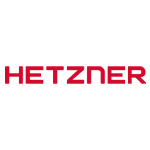
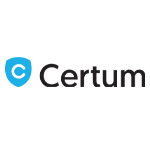
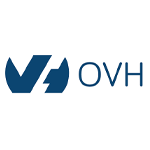

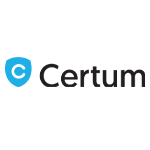

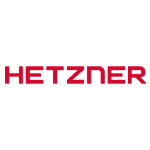
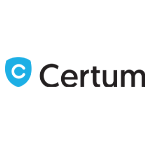
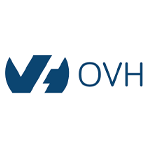
Leave a Reply